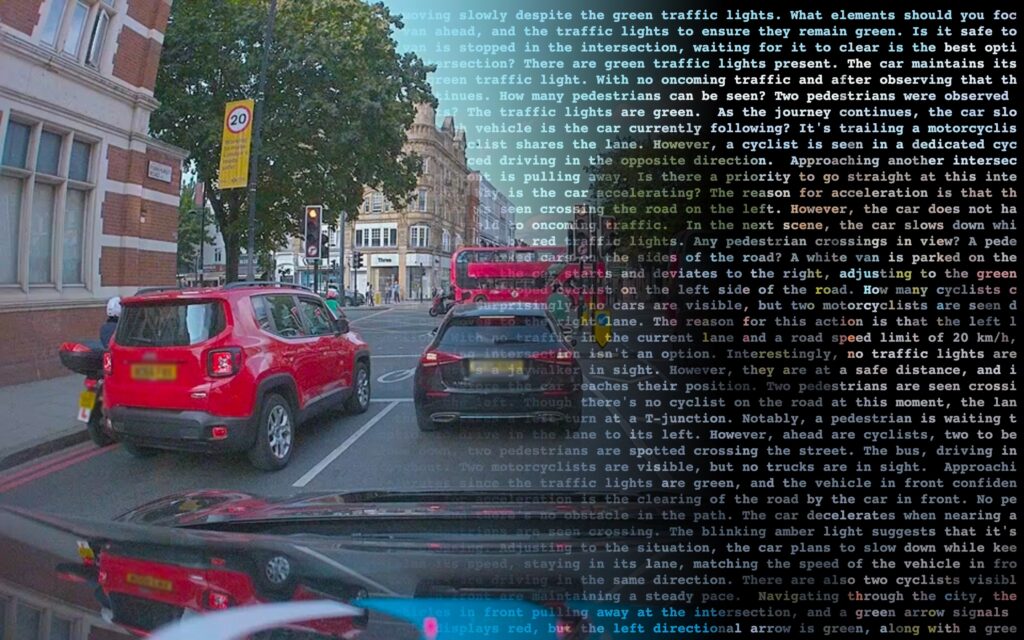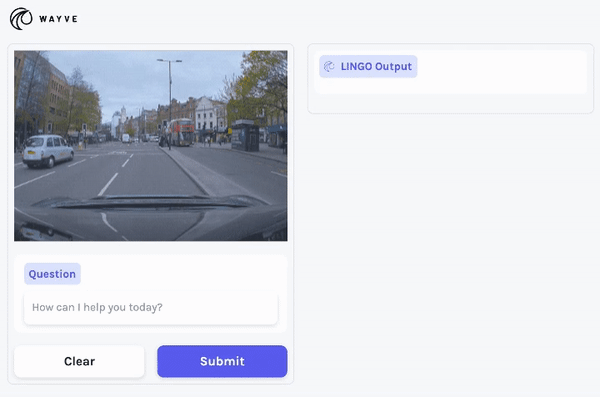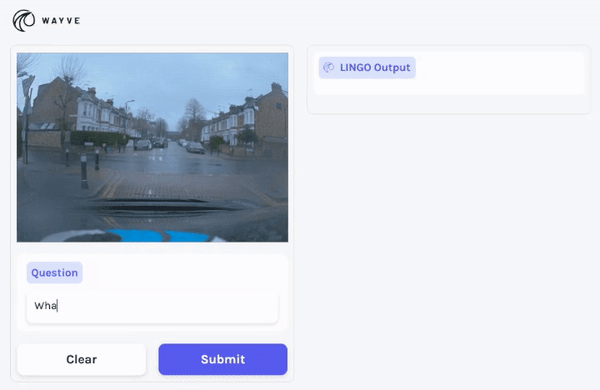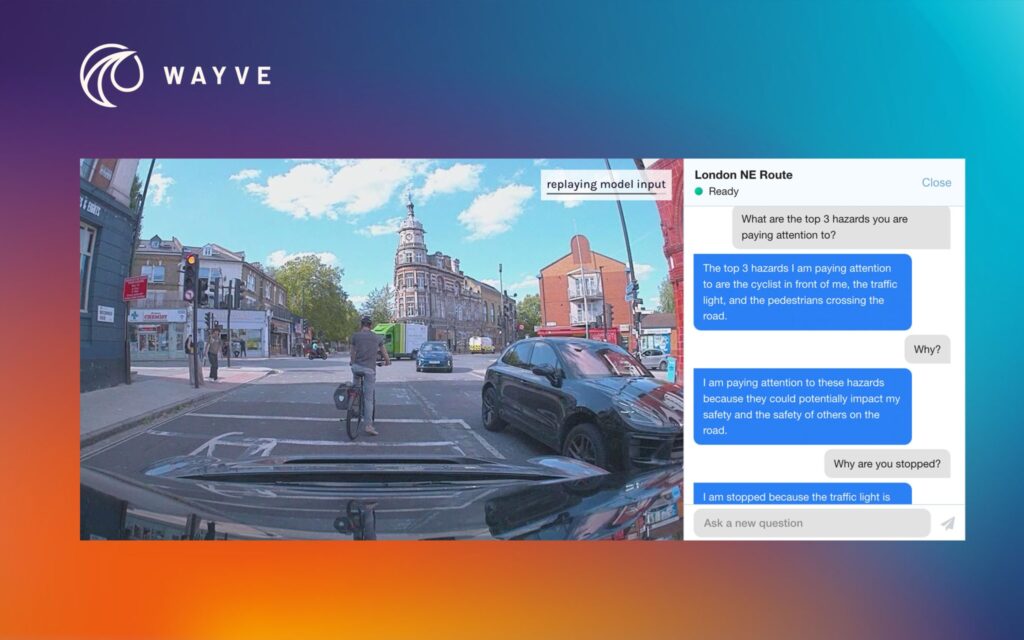Imagine being able to ask a self-driving vehicle what it is doing or why it is doing it? Why did it choose to turn left at that intersection or why did it pause before driving around an obstruction? Now, self-driving technology company Wayve has launched Lingo-1, its vision-language-action model (VLAM) that it says will revolutionize the learning and explainability of its AI Driver technology.
End-to-end AI neural nets have been criticized as black boxes, providing limited insight into why and how they make decisions. Wayve believes that by gaining deeper insight into the decision-making and reasoning capabilities of its AI models it can enhance safe driving intelligence for self-driving.
Trained using real-world data from Wayve’s drivers commentating as they drive, Lingo-1 can explain the reasoning behind driving actions. Incorporating language in this way provides a new type of data for interpreting, explaining and training AI models.
In addition to commentary, Lingo-1 can respond to questions about a diverse range of driving scenes. This feature allows Wayve to make improvements to the model through feedback. The answers given enable engineers to evaluate the model’s scene comprehension and reasoning, which can enable Wayve to more efficiently pinpoint improvements, as well as help build confidence in the system.
 Wayve sees natural language as a way to revolutionize autonomous driving by making it not only better but also safer. It is possible to incorporate natural language sources such as national road user regulations to make training of AI models simpler.
Wayve sees natural language as a way to revolutionize autonomous driving by making it not only better but also safer. It is possible to incorporate natural language sources such as national road user regulations to make training of AI models simpler.
Wayve is currently testing its self-driving technology on UK roads and is undertaking Europe’s largest last-mile autonomous grocery delivery trial with supermarket chain Asda in London. The company is confident that developments like Lingo-1 will help make the commercial deployment of self-driving vehicles a reality while building confidence in AI decision-making.
Alex Kendall, co-founder and CEO of Wayve, said, “Lingo-1 marks a big step for embodied AI: aligning vision, language and action to deliver more intelligent and trusted autonomous vehicles. We are excited by the capabilities we observe from Lingo-1 today and we believe natural language will provide a powerful step change in how we understand and interact with robotics.”
“At Wayve, we’re investing in pushing the boundaries of cutting-edge science to deliver a safer, smarter and more sustainable future of transport, resulting in Lingo-1. Lingo-1 opens up many possibilities for self-driving, improving the intelligence of our end-to-end AI Driver as well as bridging the gap of public trust – and this is just the beginning of maximizing its potential.”




